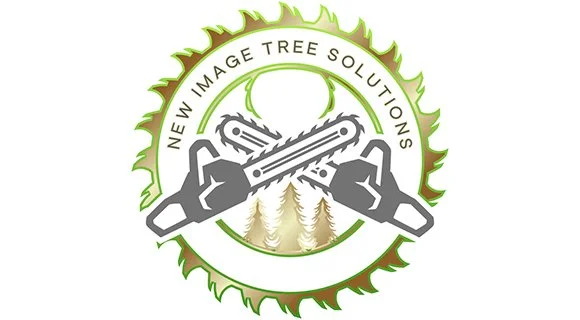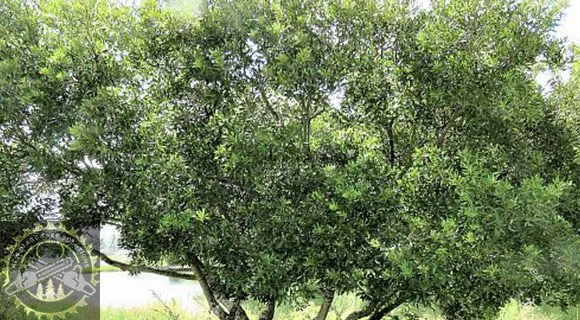Evergreen and Deciduous Trees - What is the Difference?
Why do some of my trees lose their leaves in the fall? Knowing why some trees lose their leaves while others remain green in the fall and winter helps determine how to care for them and maintain their health.
New Image Tree Solutions gathered information about evergreen and deciduous trees, their growing seasons, pruning times, pests, and removal signs.
Evergreen and Deciduous Tree Differences
Trees play a vital role in our environment, and understanding their differences helps us care for them properly. Two primary categories exist: evergreen and deciduous. Evergreens retain their foliage year-round, providing continuous greenery and shade. Deciduous trees shed their leaves annually, revealing intricate branch structures during winter and experiencing new growth in spring.
Evergreen Trees in Roswell, Georgia
Evergreen trees remain vibrant throughout the year. In Roswell, common evergreen species include:
1. Southern Magnolia - Magnolia grandiflora
Growing Season: Warm weather supports year-round photosynthesis, with peak growth during spring and summer.
Pruning Time: Late winter, just before new growth starts, is ideal for minimal disturbance.
Pests & Diseases: Vulnerable to scale insects, powdery mildew, and fungal leaf spots.
Removal Signs: Extensive branch dieback, trunk decay, and a consistently poor canopy signal a tree beyond recovery.
2. Eastern Red Cedar - Juniperus virginiana
Growing Season: Active growth during spring and summer.
Pruning Time: Early spring, before vigorous new growth.
Pests & Diseases: Susceptible to cedar-apple rust and bagworms.
Removal Signs: Significant wood rot, widespread infestation, and compromised structural integrity.
3. Leyland Cypress - Cuprocyparis leylandii
Growing Season: Most active during spring and early summer.
Pruning Time: Late winter to early spring to maintain shape.
Pests & Diseases: Prone to cypress canker and needle blight.
Removal Signs: Persistent dieback, excessive needle drop, and trunk lesions indicate a severe decline.
4. American Holly - Ilex opaca
Growing Season: Growth accelerates during spring and summer, with slower progress during cooler months.
Pruning Time: Late winter, ensuring less stress during active growth.
Pests & Diseases: Can suffer from scale insects and fungal infections.
Removal Signs: Chronic branch loss, significant discoloration, and declining vigor suggest replacement is needed.
5. Southern Wax Myrtle - Myrica cerifera
Growing Season: Steady growth occurs in spring and summer.
Pruning Time: Early spring, to shape before the growing cycle.
Pests & Diseases: Vulnerable to spider mites and leaf spot.
Removal Signs: Extensive dieback, structural weakness, and persistent pest infestation signal the need for removal.
Deciduous Trees in Roswell, Georgia
Deciduous trees provide seasonal beauty and adaptability. In Roswell, typical deciduous species include:
1. Red Maple - Acer rubrum
Growing Season: Vigorous growth during spring and summer, with brilliant fall colors.
Pruning Time: Late winter or early spring, before buds break.
Pests & Diseases: Susceptible to aphids, leaf scorch, and fungal infections.
Removal Signs: Progressive branch loss, significant bark damage, and recurrent disease outbreaks suggest removal.
2. American Elm - Ulmus americana
Growing Season: Rapid growth during warm months; canopy fills in during spring and summer.
Pruning Time: Early spring, ensuring minimal interruption during growth.
Pests & Diseases: Vulnerable to Dutch elm disease and elm bark beetles.
Removal Signs: Extensive wilting, dieback across branches, and visible signs of fungal infection often indicate it is time to remove.
3. Flowering Dogwood - Cornus florida
Growing Season: Flourishes in spring with blossoms, followed by steady summer growth.
Pruning Time: Late winter, before spring flowering begins.
Pests & Diseases: Prone to anthracnose and powdery mildew.
Removal Signs: Noticeable crown thinning, persistent leaf drop, and recurrent disease indicate replacement may be necessary.
4. Sweetgum - Liquidambar
Growing Season: Active growth during spring and summer, with vibrant fall foliage.
Pruning Time: Late winter, after dormancy ends.
Pests & Diseases: Susceptible to scale insects and canker diseases.
Removal Signs: Dead branches, trunk splitting, and reduced canopy density signal removal.
5. Tulip Poplar - Liriodendron tulipifera
Growing Season: Vigorous growth during spring and summer, with tall, majestic stature.
Pruning Time: Late winter, before the tree begins active growth.
Pests & Diseases: Vulnerable to leaf spot and fungal infections.
Removal Signs: Declining structural strength, significant branch dieback, and widespread pest infestation suggest replacement is necessary.
Best Time to Prune
Pruning evergreen and deciduous trees in late winter or early spring is best. This timing minimizes stress on trees while promoting vigorous growth during the active season.
Managing Pests and Diseases
Arborists play are key in identifying and managing pests and diseases in both tree types. Regular inspections and timely interventions can prevent minor issues from escalating. Common signs to watch for include:
Discolored or fallen leaves
Bark cracking or oozing sap
Visible pest infestations or webs
Stunted growth or dead branches
When these symptoms become widespread, it may be necessary to consult a professional to determine whether tree removal is the best option.
Documentation and Reporting
For communities, cities, and states, detailed reports and documentation from certified arborists help support decisions regarding tree management during severe pest or disease outbreaks. These reports often include:
Tree health assessments
Recommended treatments and maintenance plans
Photographic evidence and analysis of disease spread
Impact evaluations on urban forest health
Such documentation ensures proper measures are taken to protect public safety and environmental quality.
Evergreen and Deciduous Tree Species
In this article, you discovered information about evergreen and deciduous trees, including their growing seasons, pruning times, pests, and removal signs.
Understanding the differences between evergreen and deciduous trees is essential for proper care and maintenance, especially in the Roswell, Georgia, area.
Ignoring the differences between deciduous and evergreen trees will lead you to provide improper care, poor pest management, and premature failure.
Sources:
hort.ifas.ufl.edu/woody/evergreen.shtml
byf.unl.edu/deciduous-trees
askdruniverse.wsu.edu/2019/12/20/evergreen-trees-green-year











